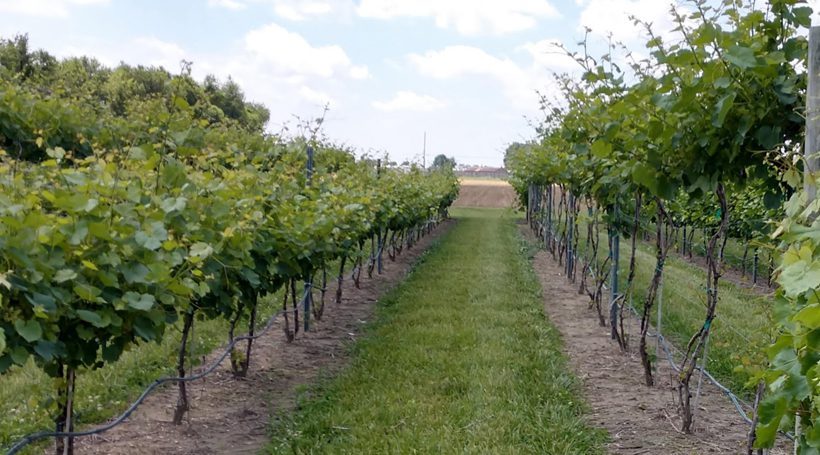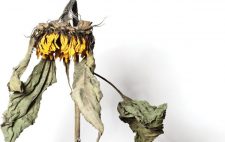New Jersey has always been the garden state. Even before it was, well, a state. Decades before the Declaration of Independence, New Jersey was making a name for itself as a new-world grape growing region. In 1758, the Royal Society of Arts in Britain issued a challenge to American colonists: Plant a vineyard and produce “five tuns of red or white wine of acceptable quality that could rival French and Italian vintages and win £200” – or nearly $60,000 in today’s currency.
The victor hailed from New Jersey, which then led the state to become a thriving wine industry for centuries. In 1864, Louis Nicholas Renault, a master vintner of French champagne, opened a vineyard in Egg Harbor City, and soon it was the largest producer of champagne in the United States. Other vintners across the state tended thousands of vines, and New Jersey wines were shipped all over the country.
Then in 1919, Prohibition began.
“There were 20 to 30 wineries just in Atlantic County prior to Prohibition, all of which were wiped out except for Renault,” says Dante Romanini, a board member of the Outer Coastal Plain Vineyard Association, which manages a viticultural area that covers most of South Jersey. Renault limped along by obtaining a license to produce sacramental and medicinal wines, but the state’s wine industry was leveled.
Prohibition was repealed in 1933, but the damage was done. And it was followed by an only slightly-less-restrictive law that allowed for a single winery for every 1,000,000 state residents. It persisted until 1981, when the passage of the Farm Winery Act allowed vintners to set up shop in the state once again.
Daniel Ward is an associate research professor of plant biology at Rutgers University and director of the school’s New Jersey Center for Wine Research and Education in Franklin Township. While the in-state wine industry is humming along, he says New Jersey has been slow to recover its national or international reputation as a wine producer. That’s due in part to the fact that, while the state’s climate and soil do ultimately produce good crops, they also present some challenges.
“This is a humid climate, and it’s harder to grow grapes for wine in a humid climate,” Ward explains. “Humid climates have a lot of year-to-year variation in growing conditions and how the grapes develop. The quality of the fruit for winemaking varies a lot more here than it does in an arid climate like California, or many parts of Italy, Spain, New Zealand and Australia.”
At the Center for Wine Research, much of the work Ward and his colleagues are doing centers on evaluating different grape varietals and growing methods to figure out what works best for local growers. “It’s the foundation of the industry,” he says.
Nothing about grape growing in New Jersey is simple, not least of all because there’s so much geographic diversity. The country has roughly 200 American Viticultural Areas – federally recognized grape-growing regions – and many of them cover millions of acres. There are 4 distinct AVAs in New Jersey alone: the Outer Coastal Plain, Cape May Peninsula, Warren Hills and Central Delaware Valley.
It’s a stunning amount of geographic variation across a small distance, says Ward, and that means a lot of different grape varieties can thrive. “Chardonnay is one of our most important varieties,” he says. “It’s the first or the second-most popular; it switches with Cabernet Franc from year to year.”
“Another place that has very high year-to-year variation in vintage is Bordeaux, France,” he says. “That is a climate similar to our own.”
And while it may seem like a good thing that so many different grapes are growing here, Ward says so much diversity also has some drawbacks.
“We don’t have an established national or international identity, or even a statewide identity, that is based on a grape or on a variety,” he says.
That’s a problem Romanini and the rest of the Outer Coastal Plain Vineyard Association has set out to solve, by developing a proprietary red wine blend they hope will put New Jersey back on the map when it comes to wine. It’s called Coeur d’Est – French for “Heart of the East.”
Coeur d’Est was created a decade ago, and while a handful of wineries initially jumped in to make the blend, “over the years, it kind of dropped off a little bit,” Romanini says. “But recently we got a grant from the New Jersey Wine Industry Council to try to promote the production of Coeur d’Est.”
Now, more than a dozen New Jersey wineries are producing the wine, which has to be produced under strict parameters from a combination of grapes including Chambourcin, Cabernet Franc, Merlot, Cabernet Sauvignon, Syrah and Petit Verdot. “It’s starting to get recognized as a premium red wine and, hopefully, along with that recognition will come recognition for New Jersey,” says Romanini. Some vineyards have already won statewide and national awards for their Coeur d’Est.
“Our reputation is starting to grow in the country and across the pond in Europe,” says Ward, “but it’s still quite limited. There are inroads being made, but there’s no broad awareness of New Jersey as a wine region yet.”
It’s only a matter of time, says Romanini. “Nobody thinks of New Jersey when they think of premium wine. At least, not until recently,” he says. “But we’ve got terrific soils and climate to grow grapes. A lot of the wineries are producing really good wines from them. And I think the future is pretty bright.”



 Then in 1919, Prohibition began.
Then in 1919, Prohibition began. 










